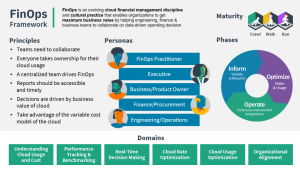
Reporters often call me about whatever newfangled buzzword is out there and what it means to the typical enterprise. Recently, I’ve been questioned about the fediverse.
The fediverse is a decentralized social network of independent servers that can communicate with each other. Are you sitting down? The term combines the words federated and universe. Clever. The concept is nothing new or unique, but the buzzword is. I’ve seen these types of architecture come and go over the years.
Is a federated cloud coming?
In the fediverse, users can communicate and interact with others across multiple storage and compute platforms while retaining control over their data and identity. Unlike the extensive social networks and public cloud providers, there is no centralized system. It’s federated, meaning that the processing and storage are distributed across any compute resources, such as a data center, a desktop, or your phone or smartwatch.
The fediverse comprises thousands of independent servers that form a giant federated social network. Each server is a community with its own people and vibe. However, users can talk to people in other communities as well. Some platforms in the fediverse include Mastodon, Lemmy, PeerTube, and Pixelfed—all social networks that I’ll likely never use.
The term fediverse is more related to social networks and not cloud computing, but the concept is easily the same on both types of systems. Indeed, federated cloud computing systems have been discussed for years. Still, since we needed suitable security models and speedy networks, it was mostly dismissed in favor of building immense cloud computing data centers that could be centrally controlled. This is where we are today.
Federated cloud services would be much like the fediverse in that although some central resources would have to exist, the resources providing computing and storage services could be anywhere. They would be connected to a high-speed, reliable network and would support federation and security protocols.
What does that mean? Any resource would be fair game, such as the thousands of servers sitting idle in private enterprise data centers right now, or perhaps your desktop PC or even a computing system inside a factory or your automobile. If it can process data, and you’re willing to participate in this federated system, it can be a part of a federated cloud… well, sometimes.
Scary but cheap
If you want to see someone’s head explode, explain a federated cloud computing service to your chief information security officer who is just getting used to the fact that some of the business’s data and processing reside on remote public cloud providers.
Try explaining that the data will exist on hundreds of servers scattered everywhere. Perhaps on their neighbor’s computer or even on computers in a competitor’s data center.
That brings me back to the early days of cloud computing when I was walked out of the building for suggesting such blasphemous technologies could exist. Here we are.
The core idea is to save money, but it requires accepting that the physical resources could be scattered in any system willing to be part of the federated cloud. I’m not going to think about this in silly ways, in that we’re going to take over someone’s smartwatch as a peer node, but there is a vast quantity of underutilized hardware out there, still running and connected to a network in an enterprise data center that could be leveraged for this model.
The idea of a federated public cloud service does exist today at varying degrees of maturation, so please don’t send me an angry email telling me your product has been doing this for years and that I’m somehow a bad person for not knowing it existed. As I said, federation is an old architectural concept many have adopted. What is new is bringing it to a widely used public cloud computing platform, which we haven’t seen yet for the most part.
In this approach, a centralized system coordinates the provisioning of traditional cloud services such as storage and computing between the requesting peer and a peer that could provide that service. You would end up on a physical server someplace with unused capacity available for a fee. Think of it as a technological Airbnb.
The good news is this method is highly efficient in cost and power consumption. This would mean about one-tenth the cost of traditional public cloud services, which could lead many to use a federated cloud. Moreover, making money by offering up idle capacity could also be tempting. The existing public cloud providers could offer federated services to the centralized systems as an option.
Does this have a chance of becoming a thing? I’ve been saying for years that we’re moving to ubiquitous computing, and as our networks and hardware technology improve, this will continue to be the case. We’re not going to focus as much on the centralization of applications and data on a single platform but on how all these different systems exist within the ecosystem that makes them the most useful. A federated cloud is an instance of this.
Copyright © 2023 IDG Communications, Inc.

